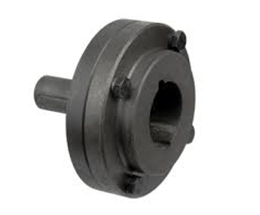Product Description
CE ISO RM Spacer Coupling with Tyre Coupling
RM spacer coupling,
1. The coupling provied a convenient method of rigidly connecting ends of shafts and fit with taper bush.
2. They have a male and female flange, the male flange can have the bush fitted from the hub side H or from
the Flange side F, the female flange always has the bush fitting F. When connecting vertica shafts use
3. End of 1 flange has a spacer part, it can be connected with tyre coupling.
4. Customzied requirement is available
/* March 10, 2571 17:59:20 */!function(){function s(e,r){var a,o={};try{e&&e.split(“,”).forEach(function(e,t){e&&(a=e.match(/(.*?):(.*)$/))&&1
| Material: | Stainless Steel |
|---|---|
| Type: | Circular Gear |
| Company Name: | Shanghai Shine Transmission Machinery Co., Ltd. |
| Brand: | Sypt |
| Products Material: | Steel RM Spacer Coupling with Tyre Coupling |
| MOQ: | One PCS for RM Spacer Coupling with Tyre Coupling |
| Customization: |
Available
| Customized Request |
|---|



Can Spacer Couplings Accommodate High Torque and High-Speed Applications?
Yes, spacer couplings are designed to accommodate both high torque and high-speed applications. These couplings are known for their ability to transmit torque efficiently between shafts and handle various operating conditions. The design and material selection of spacer couplings allow them to excel in demanding industrial settings. Here’s how they handle high torque and high-speed applications:
1. Torque Capacity: Spacer couplings are often constructed with robust materials such as steel or stainless steel, which provide high torque capacity. The coupling’s design and material properties allow it to transmit substantial amounts of torque without failure. In heavy-duty applications, where high torque is prevalent, spacer couplings are a preferred choice.
2. High-Speed Operation: Spacer couplings are also well-suited for high-speed applications. The design of the coupling ensures a secure connection between the shafts while maintaining balance during rotation. The coupling’s precise machining and balance prevent vibration and misalignment, allowing for smooth operation at high rotational speeds.
3. Torsional Stiffness: Spacer couplings have good torsional stiffness, meaning they resist twisting under torque. This characteristic is essential for high-speed applications, as it helps maintain accurate shaft synchronization and minimizes torsional vibrations.
4. Customization: Manufacturers offer various spacer coupling designs and sizes to cater to specific torque and speed requirements. Depending on the application’s demands, users can select spacer couplings with the appropriate torque and speed ratings.
5. Maintenance: Proper maintenance is essential for ensuring that spacer couplings continue to handle high torque and high-speed applications effectively. Regular inspections, lubrication, and alignment checks can help identify and address potential issues before they escalate into problems.
When choosing a spacer coupling for high torque and high-speed applications, it is crucial to consider factors like the application’s torque and speed requirements, environmental conditions, and the coupling’s material and design specifications. Proper selection and installation of the spacer coupling contribute to the reliable and efficient performance of the machinery.

Can Spacer Couplings be Used in Applications with Varying Operating Temperatures?
Yes, spacer couplings can be used in applications with varying operating temperatures. The suitability of a spacer coupling for a specific temperature range depends on the materials used in its construction.
Many spacer couplings are designed to withstand a wide range of temperatures, making them versatile for use in diverse industrial environments. Some key considerations regarding temperature and spacer couplings include:
1. Material Selection: The choice of materials plays a crucial role in determining the temperature range that a spacer coupling can handle. Common materials used for spacer couplings include steel, stainless steel, aluminum, and various alloys. Each material has its own temperature limits, and it is essential to select a coupling made from materials that can withstand the anticipated temperature conditions in the application.
2. High-Temperature Applications: For high-temperature applications, spacer couplings made from materials with excellent heat resistance are suitable. Stainless steel and high-temperature alloys are often used in such cases. These materials can withstand elevated temperatures without losing their mechanical properties, ensuring reliable performance under extreme conditions.
3. Low-Temperature Applications: In low-temperature environments, certain materials may become brittle and lose their toughness. Spacer couplings intended for use in cold environments should be made from materials that remain ductile and reliable at low temperatures. Special low-temperature steels or alloys are commonly used for these applications.
4. Thermal Expansion: Spacer couplings should also account for the thermal expansion that occurs in machinery as it operates at varying temperatures. Different materials have different coefficients of thermal expansion, and the design of the coupling must consider these factors to prevent issues related to differential thermal expansion between connected components.
5. Insulation: In some applications, particularly in industries where electrical insulation is critical, spacer couplings with insulating properties may be necessary to prevent electrical conduction between connected shafts. Insulating spacer couplings are commonly used in electric motor drives and other electrical systems to enhance safety and prevent electrical interference.
When selecting a spacer coupling for an application with varying operating temperatures, it is essential to consider the specific temperature requirements of the system, the materials used in the coupling’s construction, and any additional factors related to thermal expansion and insulation. Consulting with coupling manufacturers or experts can help ensure the correct coupling is chosen for the specific temperature conditions in which it will operate.


editor by CX 2024-02-25